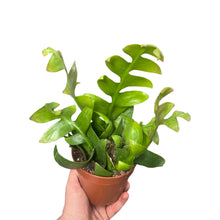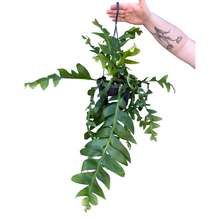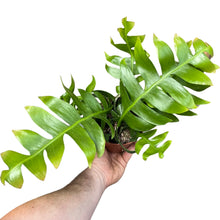Selenicereus chrysocardium is an epiphyte from the Cactaceae family and is native to tropical rainforests of Mexico. It was brought back from Chiapas, Mexico, in 1951 and in 1954 at the New York Botanic Gardens, the cuttings produced a flower. It's bloom is huge and white with golden stamens, this is how the plant got it's name 'chrysocardium' meaning 'golden heart'. S.chrysocardium can reach up to 12 inches wide in it's native environment. It's quite difficult to get this plant to flower but allowing 2 rest periods of at least 6 weeks each; first resting period should last from the beginning of August to mid September and the second resting period is after the plant has bloomed.
Light: Bright indirect light, meaning the plant sees the sun for 0-4 hours per day - this could be through trees or a translucent curtain, it’s important for the plant to see the sky in order to thrive. In its natural environment this plant would receive dappled light.
Water: Allow the majority of the mix to dry out. Before watering, ensure the substrate isn’t compacted, if it is, aerate it with a few pokes of a skewer or blunt stick, pour water slowly over the top and allow the water to pass through the drainage holes.
Potting mix: A well draining mix composed of coco coir, perlite or vermiculite, orchid bark and worm castings; you could also add some horticultural charcoal to this epiphytic mix.
Fertilising: Feed your plant with a cactus fertiliser every other watering during the growing season or when you observe active growth. You can dilute fertiliser to half the recommended amount but never add more.
Temperature: 18-26°C, no lower than 12°C.
Humidity: Selenicereus chrysocardium would prefer higher humidity but do well to adapt to average home humidity. You can increase humidity by placing the plant on a watered pebble tray or using a humidifier.
Selenicereus chrysocardium is non-toxic.





